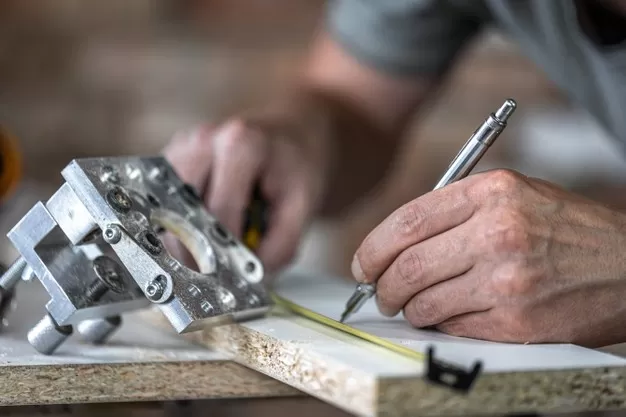Woodworking is a fantastic way to better your hand-eye coordination while building valuable life skills. From learning to measure to understanding how tools operate, this pastime truly betters you as a person. To learn more about making woodworking even more enjoyable, continue reading this article and the tips therein.
When working on a project, face your light directly in your working area. The bright light will enable you to detect any drips or runs you may not see otherwise. Missed areas will also be more visible. Be sure to always work in a well-ventilated area as well.
Try using duct tape to create a level spot. If you’ve used your table saw on a mobile base, you should be able to pull it in and out quickly. To finish it up, find a level spot on your floor. This also helps you saw boards without obstruction. Mark your wheel positions using duct tape that is brightly colored, and then roll the saw to that same flat spot each time you need to saw.
Be sure your clothing is tucked in properly whenever you work with power tools. Any loose clothing or long, dangling hair or jewelry can easily get tangled in the agency, leading to injury or another disaster. Tuck everything in, pull back your hair, take off dangling jewelry and then get down to work.
If a joint in your work does not fit together correctly, this cannot be fixed with glue. While it may seem like a simple way to fix things, it will only work temporarily. The best thing to do would be to start over and be more careful the next time.
Were you stumped on a good woodworking project? Take a walk around your home. There are always things around your home that need fixing. Or you may see an area that could use something new that can be created with your skills. Let your house become the inspiration for what you need.
Does your joint compound seem to dry out in between uses? There is a simple fix to help keep your joint compound moist. Pour a small amount of water into your collective mixture before sealing it. The next time you need to use the joint compound, drain off the excess water, and your joint compound will be perfectly moist.
If you are working on your projects in your garage, keep your garage door open. You will be created a lot of wood dust. An open garage door allows your work area to be appropriately ventilated. Also, during the day, your work area will be better lighted with the garage door opened.
Always wear the proper safety gear when you are working with wood. This includes eye protection, gloves, and earplugs with an electric saw when cutting wood. You should also wear a dust mask to avoid inhaling little pieces of wood. Keep this gear handy, so you always remember to use it.
Using a drafting square can help your accuracy when performing more minor cuts. Measuring wood accurately can be complicated when the ranges are several feet long. Carpenter squares are complicated, and drywall squares aren’t always accurate. Try stopping into your friendly neighborhood art supply store to pick up a drafting yard. They’re genuine and straightforward to use.
No matter where you get your wood for your woodworking projects, look it over carefully before you begin cutting, drilling, or sanding. If there are any staples, screws, or nails in the wood, you could damage your woodworking equipment and injure yourself. Be sure all any wood you work with is free of foreign matter before you begin working.
You often inadvertently split the wood when driving larger nails into panels like a two-by-four. You can usually avoid this annoyance by using a simple trick. Turn the pin over and give the sharp end a quick rap with the hammer, dulling the tip slightly. The nail is then less likely to split the wood.
Before you tackle a project, make up a written plan first. Writing things down to analyze your costs ahead of time often helps to keep costs under control. By being aware of the amount of wood you require for your projects, you can save money and time. Plan things so that they go well.
Figure out the starting point for your project by considering your item’s purpose. For example, if you plan to create a workbench, think about how you can make it more organized. Add shelves above it or a board on the wall behind it, which allows hooks to be added to hang tools on.
Consider cedar for your projects. Whether finished or left untouched, it is gorgeous, and it smells fantastic. On top of that, it is easy to work with and provides you with a material that makes your project come to life. Whenever you want to work with wood, cedar is a great choice.
IN the planning stage of large projects, you should think about possible changes you will want to make in the future. For instance, you might be building a shed and wish to add electricity before long. If you would, allow room to install switches and wiring and space on the ceiling for the light.
Be careful if you are gluing and staining at the same time. If you apply too much glue to a visible section of the piece you are working with, it can fail to soak into the wood before it dries. Once it is dry, it can cause your stain not to stick properly to the grain.
Conclusion:
All great masters of their trade take the time to educate themselves as much as possible regarding their skills and techniques. You will be a better woodworker now that you have taken the time to learn from this article. Continue your reading so that you can produce excellent results.




